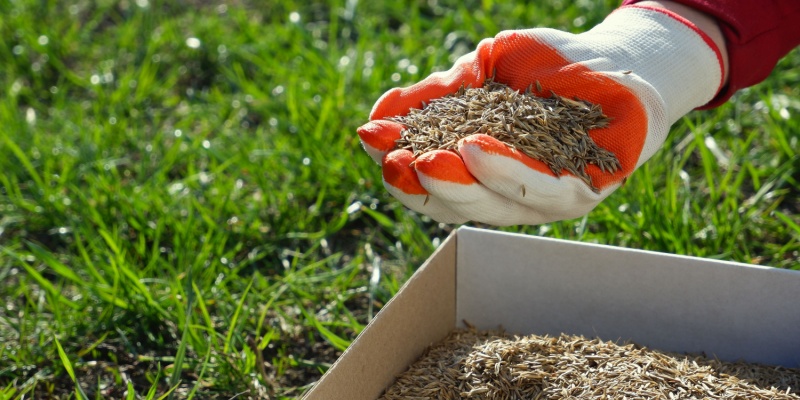Regularly seeding your lawn, also known as overseeding, is a crucial practice for maintaining a healthy, vibrant yard. Whether you’re dealing with bare spots, thinning grass, or just looking to enhance the overall appearance of your lawn, seeding provides numerous benefits. Here’s why you should make lawn seeding a regular part of your lawn care routine:
Benefits of Regular Lawn Seeding
1. Improved Turf Density:
Regular seeding introduces new grass varieties to your lawn, increasing turf density and filling in bare spots. A dense lawn is more attractive and provides a soft, lush surface for outdoor activities.
2. Enhanced Lawn Color:
Seeding can improve the color and uniformity of your lawn, making it more visually appealing. Different grass varieties can add depth and richness to your yard’s overall appearance.
3. Increased Disease and Pest Resistance:
A dense, healthy lawn is more resistant to diseases and pests. Regular seeding helps create a stronger lawn that can better withstand these challenges, reducing the need for chemical treatments.
4. Weed Suppression:
Weeds thrive in thin, weak lawns. By regularly seeding and maintaining a dense turf, you can suppress weed growth and reduce the need for herbicides.
5. Enhanced Drought Tolerance:
Regular seeding promotes deeper root growth, which improves your lawn’s ability to withstand drought conditions. A well-seeded lawn can retain moisture more effectively, reducing the need for frequent watering.
6. Repairing Damage:
Lawn seeding helps repair damage caused by pests, diseases, drought, or heavy foot traffic. Regular seeding ensures your lawn recovers quickly and maintains its health and appearance.
How to Seed Your Lawn
To ensure successful seeding, follow these steps:
1. Prepare the Soil:
Remove weeds, debris, and thatch from your lawn. Loosen the soil to create a good seedbed and improve seed-to-soil contact.
2. Choose the Right Seed:
Select a high-quality grass seed that is suitable for your climate and soil type. Ensure the seed is fresh and not past its expiration date.
3. Even Distribution:
Use a broadcast spreader to evenly distribute the grass seed across your lawn. Be careful not to apply too much seed, as overcrowding can hinder germination.
4. Watering:
Keep the soil consistently moist during the germination period. Water lightly but frequently to avoid washing away the seeds.
5. Fertilize:
Apply a starter fertilizer to provide essential nutrients for the new grass. Follow the recommended application rates to avoid over-fertilization.
6. Protect the Seedlings:
Protect the newly seeded area from heavy foot traffic and pets. Consider using mulch or straw to retain moisture and protect the seeds from birds.
Regularly seeding your lawn is essential for maintaining a healthy, vibrant yard. By improving turf density, enhancing lawn color, increasing disease and pest resistance, suppressing weeds, and enhancing drought tolerance, seeding provides numerous benefits that contribute to a beautiful and resilient lawn. By following proper seeding practices and timing, you can ensure successful germination and establish a lush, green yard that enhances the overall appeal of your property. Make lawn seeding a regular part of your lawn care routine to enjoy the long-lasting benefits of a healthy, beautiful lawn. If you are not up for doing all of this work on your own, you can always get help from the pros at Weed Busters for seeding and all of your other lawn care needs.

